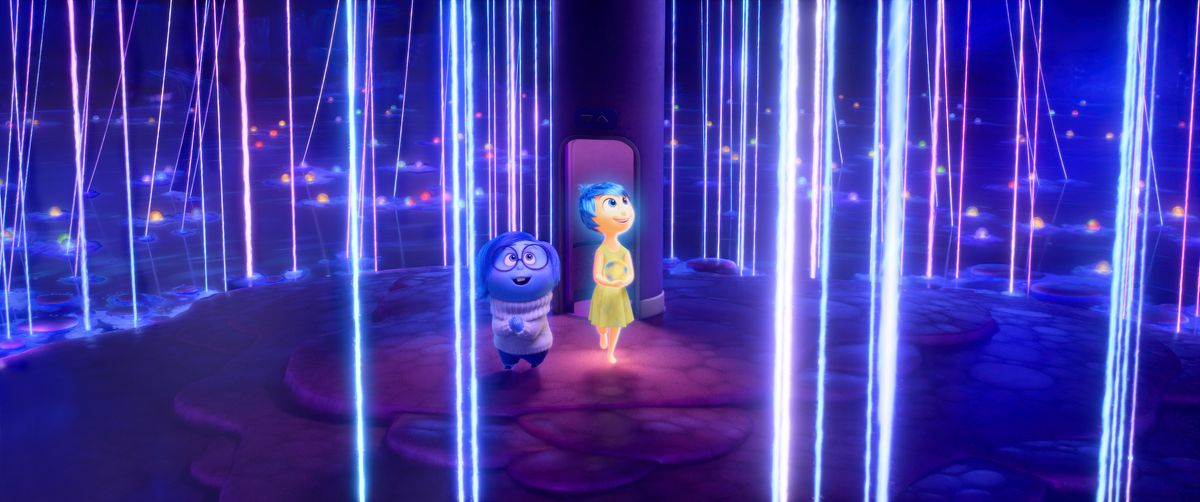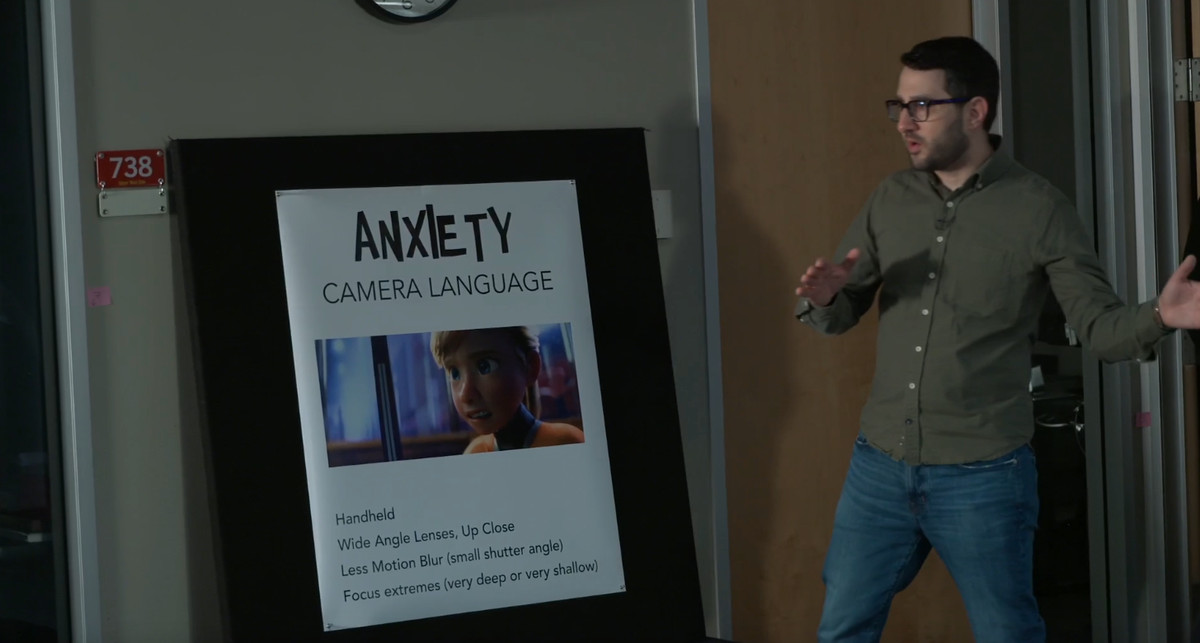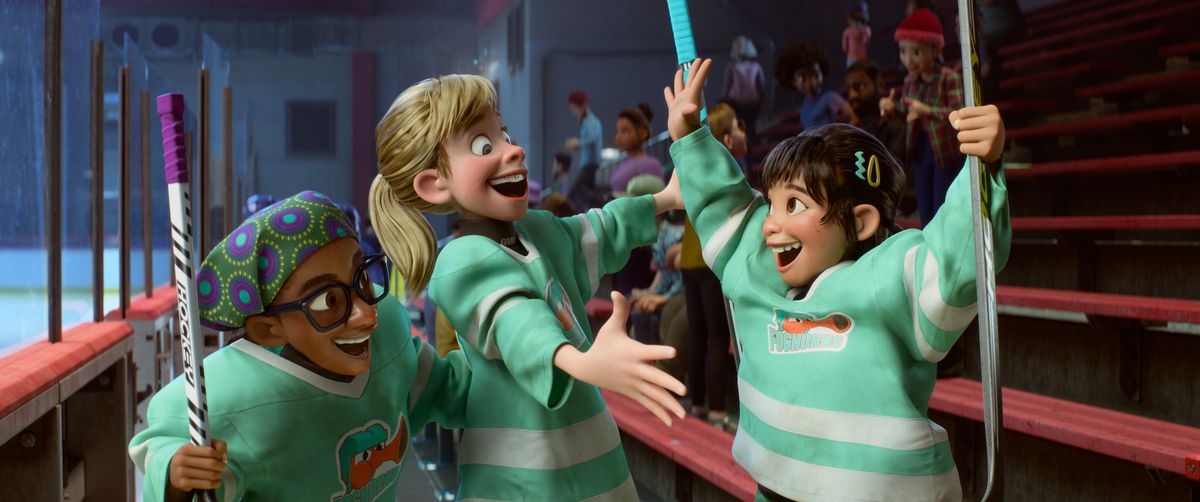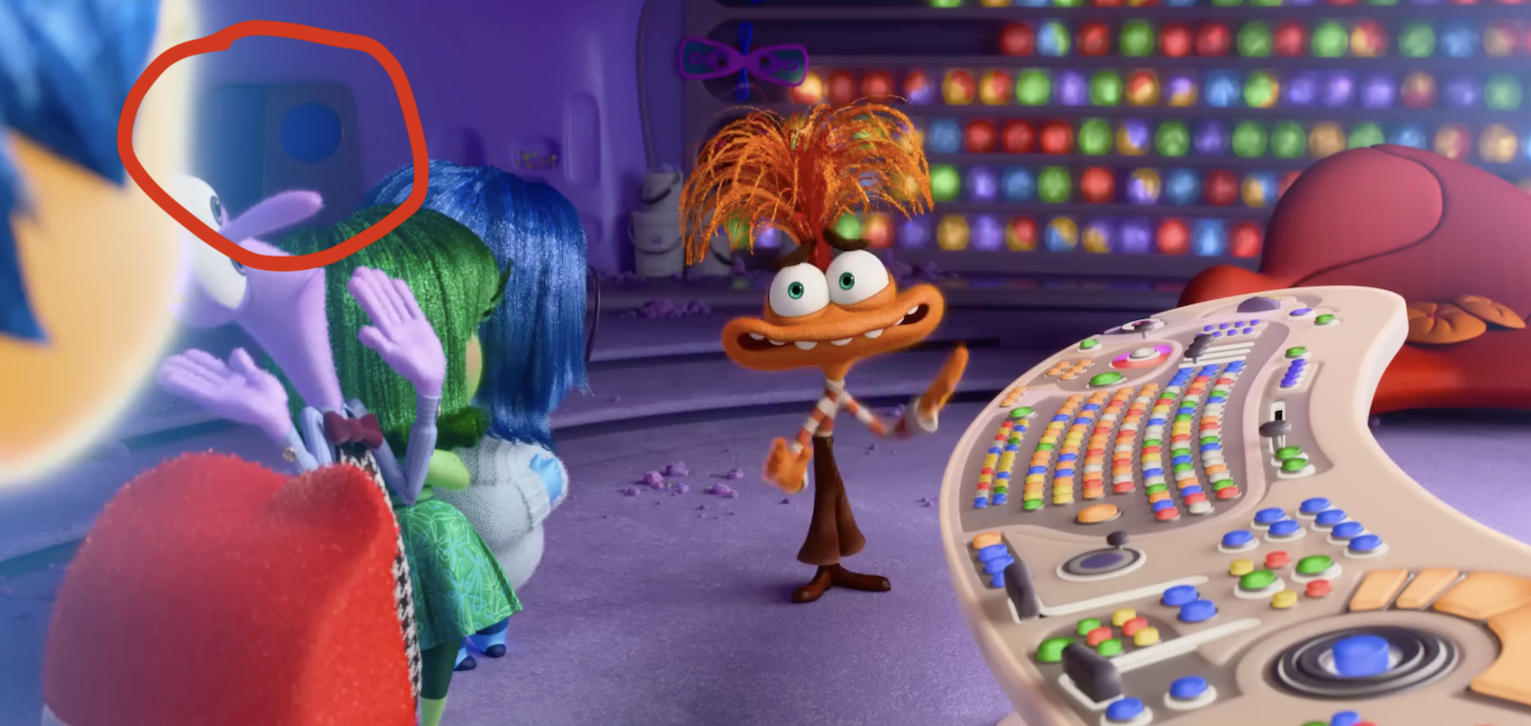Pixar’s 2015 movie Inside Out extended the studio’s proven story formula to its logical end point by asking the question What if emotions had emotions? The result is a poignant, whimsical adventure that delves into the mind of an 11-year-old girl grappling with some big life changes. The sequel, Inside Out 2, picks up a year or so after the first movie — and introduces new emotions as characters, which has raised a lot of questions for Pixar fans. During a press visit to the Pixar campus, we got a first look at Inside Out 2, and got to talk to the filmmakers about creating a teenager’s emotional landscape.
As Inside Out 2 begins, Riley is 13, and has adjusted to life in San Francisco with her two best friends. She’s ready to take on high school, and her familiar five emotions — Joy (Amy Poehler), Sadness (Phyllis Smith), Anger (Lewis Black), Fear (Tony Hale, taking over for Bill Hader), and Disgust (Liza Lapira, taking over for Mindy Kaling) — are super stoked to help her out. But the morning she’s set to go to an elite hockey training camp, an alarm goes off in her mind, and a group of new emotions arrives at Headquarters, where her emotions live and work.
Leading the pack is Anxiety (Maya Hawke), with Envy (Ayo Edebiri), Ennui (Adèle Exarchopoulos), and Embarrassment (Paul Walter Hauser) rounding out the crew of cringe teenage emotions. They’ve arrived to make sure Riley is set up for success in high school, even if that means overriding Joy and the rest of the emotions and taking control. Here’s what Polygon learned about the process of making the movie when we visited Pixar’s own headquarters.
Inside Out 2 is the first Pixar movie with a mostly female story team
Story artist Rebecca McVeigh says a story crew mostly made up of women helped shape the authenticity of Riley’s journey. She also tells us that a group of women across multiple departments on Inside Out 2 got together to share insights during production.
“We all got into a room and sat around and told each other our bad 13-year-old stories,” she says. “And it was pretty interesting how cross-generationally — because there’s people in their 60s working on this film, people in their 20s — how universal that 13-year-old experience was. We did kind of agonize over, like, Do I remember being 13 in a way that would feel authentic to a modern 13-year-old? Us all getting to share our 13-year-old experiences made me go like, Oh, no, I think it’s just the same.”
Director Kelsey Mann started out knowing he wanted to explore Riley as a teenager
Image: Disney/Pixar
Mann says Joy’s last line in Inside Out (“After all, Riley’s 12 now. What could happen?”) inspired him to tackle Riley’s teenage era. Looking back on pictures of his own childhood, and watching his smile slowly disappear as he grew, solidified his desire to explore these turbulent years, where all sorts of big, new emotions start taking over.
“I’d zeroed in on the idea of Anxiety being a major character,” Mann says in the press notes. “It’s something that really starts to appear as we become teenagers — we can all relate. I remember doing a lot of research early on about what happens in our brains at this age that triggered this idea of a wrecking ball coming through Headquarters — a bunch of workers piling in and tearing everything down. It’s a renovation — that’s kind of what it feels like to be a teenager. It’s chaotic.”
In the first draft of the movie, nine new emotions showed up
That idea ended up feeling a little too overwhelming for the movie. So after talking to some experts, including professor Dacher Keltner, the emotional consultant for the first movie, Mann and producer Mark Nielsen focused on emotions around self-consciousness. Anxiety was a key component from the get-go, but they landed on envy, embarrassment, and ennui over emotions like guilt and schadenfreude.
In addition to the new emotions, Riley’s mind now includes a whole belief system

Image: Disney/Pixar
Joy’s opening monologue explains that as Riley’s grown up, some of her memories have solidified into Beliefs about herself and the world. Those Beliefs rise up and tangle into a glowing little bundle that makes up Riley’s Sense of Self. Joy and the rest of the original emotions are very proud of Riley as they know her — and they’re very protective, especially as the new emotions barge in.
Recreating the characters in updated computer software let the designers fix some quirks
Almost 10 years have passed since the first Inside Out. Since Pixar’s technology is rapidly changing, one of the biggest challenges involved recreating all the iconic characters and locations from scratch in updated software.
But even if they hadn’t, production designer Jason Deamer told Polygon he probably still would’ve taken the opportunity to use the new technology to spruce up the characters.
In the first movie, for instance, Sadness’ sweater wasn’t really generated from woven CG threads — it was just shaded in a way that made it look like it was. But with the new software, her outfit could become more visually complex.
“The new one is actually woven string,” says Deamer. “It looks more like a sweater. It looks like Sadness’ sweater, but better.”
The filmmakers got to repurpose unused Inside Out elements for the sequel
The returning characters and sets got slight makeovers so they’d be more polished and refined. But using old designs turned out to have some perks, especially when it came to some details the designers didn’t have a chance to use on the first film.
For instance, the filmmakers on Inside Out put a little Anger-shaped door in Headquarters. That was supposed to be for a gag where he shut himself inside a separate space when he needed to calm down. That joke didn’t end up making it into the first movie, but the door is still present and visible. So it became the door the new emotions use to enter Headquarters in the sequel.
Uncut Gems was one of the movie’s biggest inspirations

Director of layout photography Adam Habib cites the Safdie brothers’ high-stress thriller as a big influence on framing Anxiety’s scenes and developing Inside Out 2’s visual language.
In production, the animation team created static sets and put the digital characters in them, then placed a virtual camera within those sets, which functioned just like a live-action movie would use a real camera. They were able to move this “camera” around within the assets they’d created, trying out new angles and framing distances in order to figure out what would work best for each scene. Sometimes that even involved setting up an iPad or other external device to physically move around a virtual set.
Anxiety had a specific camera language, which benefited from the kinds of close-ups the Safdies used to convey similar intensity and anxiety in Uncut Gems. Habib says Mann took a lot of elements on board from Uncut Gems and the way it visually suggests its emotion, including the handheld camera, extreme deep and shallow focus, and the use of wide-angle lenses — even if they’re only virtual lenses, created with CG effects.
Mann auditioned Maya Hawke in a back room at Disney World

Image: Disney/Pixar
Mann says he was on a family vacation at Epcot when he got a call that Hawke was available to audition. So he had to sneak out through the Mexico Pavilion to take a Zoom call in an office.
“She absolutely crushed it,” says Mann. “And my favorite part was, at the end of it, I talked about what I wanted the movie to be about, and she just immediately connected with it. I think I even cried as she was talking. […] And then I went back to Epcot and continued my vacation. It was hilarious.”
The filmmakers regularly met with a group of teenage girls for feedback

Image: Disney/Pixar
In order to make sure Inside Out 2 captured the reality of being a teenage girl, the filmmakers created a focus group of girls ranging in age from 13 to 19. They dubbed the group “Riley’s Crew” and met with them every four months to show them the movie in progress.
“That group was incredibly helpful,” says Mann. “And man, did they give great notes. They gave, sometimes, better notes than the people who work here. They were fantastic with it. They treated it like a [school] assignment. […] They’d almost send, like, a cover letter, like a book report. It was adorable. It was amazing. They really took it seriously. It was awesome.”
One of Mann’s favorite gags didn’t make the final cut
We’ll have to wait and see what new areas of Riley’s mind the emotions stumble upon, but one axed section was called Procrastination Land.
“The joke was that it was always under construction and [it says] ‘Coming soon: Procrastination Land,’” says Mann. “And [the mind workers] are like, ‘When are they going to finish that place?’ They’re like, ‘Ah, they’ll get around to it.’ We had workers who were like, ‘Hey, should we start building this land today?’ They’re like, ‘Nah,’ and they’re on their phones.”
Unfortunately, even though Riley’s Crew really adored that joke, it just slowed the movie’s action down. Such is the nature of procrastination, after all.
Inside Out 2 hits theaters on June 14. We’ll have more from our Pixar “set visit” as we get closer to release.



